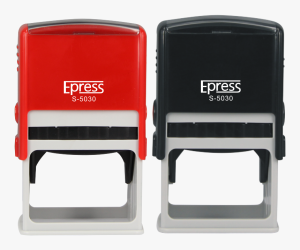How to Accept Online Credit Card Payments on Your Site by Opening a Merchant Account
8 min read
Do you want to avoid all the difficulties associated with opening a third party merchant bank account? Try Shopify Payments .Opening a merchant bank account should be easy. After all, merchant account providers are going to take cash every time you process a transaction. They should be happy to work with you, right? If only that was the case. The payments industry is very competitive, and merchant account providers obviously want to work with you – but they need to research your business before accepting your request. In this article, we’ll tell you exactly how to get your merchant account opening request approved, and what to do if it’s denied. Since the payments industry and the jargon used are quite complicated, we will also define some of the more commonly used terms, such as merchant account, payment gateway, and payment processor. If you already know the basics, feel free to skip the definitions.
What is a Merchant Bank Account?
A merchant bank account is a special bank account that is used to hold funds captured from sales made by credit or debit cards. If you’ve used your card before, and wondered where the funds went, they were simply transferred to a merchant account. Then they are transferred to a normal business bank account, usually on a weekly or daily basis. If you want to accept online credit card payments, you will need a merchant account provider (example: Merchant-Accounts.ca) that issues merchant accounts to businesses. Or, you can use the services of an aggregator (example: PayPal), which is a business that processes transactions through its own merchant account, on behalf of other businesses. It’s also important to note that a merchant account is a legal agreement between you and the provider. You will receive general conditions of sale and use and a contract to sign. Here are some things to look at before signing a merchant account contract.
What is a Payment Gateway?
When processing a credit card transaction, information needs to be sent somewhere to verify that the cardholder has enough funds to pay for their purchase. When it comes to a transaction carried out in a traditional physical business, it is the POS (point of sale) system that collects the cardholder’s data, formats it, and sends it to Visa or MasterCard to see if the customer has sufficient funds. In the case of an electronic commerce transaction, this service is carried out online through a payment gateway. The payment gateway receives transaction requests (which are sent online by software such as Shopify), and then connects to Visa or MasterCard, and ultimately to the customer’s card to verify they have sufficient funds. If he has enough money, the transaction is authorized and the cardholder’s funds are transferred to the merchant account. Often a merchant account and a payment gateway are set up in one process by the same online banking payment solutions provider.
What is a Payment Processor?
When discussing payments, the term “payment processor” tends to be used arbitrarily and most often incorrectly. It is often used by business owners interchangeably to refer to the merchant account provider, the gateway, or both (especially because the merchant account and the gateway are often provided together). In technical terms, this is an incorrect use of the term. However, it is used in this way so widely and loosely that there is in fact a “street definition” used by people who are not from the milieu, and a technical definition of industry which is quite different. As to the definition used in the industry, payment processors refers to the services to which a payment gateway sends transaction requests. The payment processor then processes the transaction requests and sends the Visa and MasterCard authorization and settlement files, and distributes them across the network to various merchant account providers and Shopify Payment Gateways The payment processor also handles other aspects of the transaction such as processing requests and settling chargebacks. In short: payment processor is an umbrella term that is used to refer to the company that processes Visa and MasterCard payments.
What is the Difference between a Payment Gateway and a Processor?
As we can see above, the terms are used interchangeably, and for the majority of people they often mean the same thing. Example: A processor is a company that facilitates the processing of payments on behalf of the merchant.
Why Do I Apply to Open a Merchant Bank Account?
To explain this in the simplest way possible, the reason you need to submit an application to be able to open a merchant account is because merchant account providers risk losing money every time they process a card transaction. Credit on behalf of your business. Visa and MasterCard have a very clear policy that is applied when the cardholder pays for a good or service: The cardholder must receive the promised product or service. If the product or service in question is not delivered, the cardholder has the right to get their money back. This is one of the basic principles of consumer protection that applies to transactions made with credit cards. To mitigate the risk, the credit card payment processor has a selection / application process. Note that most processors charge a processing fee, and only a few of them will reimburse the processing fee if they are denied. If this concerns you, ask if your application fees are refundable. This is not an unreasonable request, and if your chosen processor does not accept, you can find another that will.
Beware of Surreal Promises
Beware of unrealistic promises when discussing with your potential Internet banking payment solution, ask what documents will be required and how long it will take for approval. You should receive concrete answers to these questions. In particular, if you receive responses like “we approve any type of account” (especially if you know your product or service carries a higher risk), you should be very skeptical. This is also a situation where you should make sure you get a copy of your business agreement before signing it. If the clauses do not inspire you with confidence, and do not contain an explanation of the process or references to the supporting documents, then be careful: you may not receive what was promised.
How to Get Your Merchant Bank Account Opening Approved
1. Gather your Financial Statements
Financial statements are the best bargaining chip you can use to get the best deal of approval. I sometimes work with clients who do not wish to present their financial statements. This is usually because they run a private, medium-sized business, and want to keep their information confidential. However, this is a huge mistake when negotiating with e-commerce payment solution providers. Insurers pay attention to financial stability first, to know that the company will continue to operate successfully in the future. On the other hand, I work with startups that don’t have a solid financial history. This makes it more difficult for startups in this situation to get approval (especially if your product carries a higher risk) to open a merchant bank account. The insurer is well aware that if the merchant receives a pile of chargebacks, it will be difficult for them to reimburse the funds to the cardholders. Merchants who run startups would go out of their way to have a strong balance sheet, as that would be a major difference that could tip the scales in their favor when it comes to getting them approved. If a business has put in a lot of effort to be successful, it would not be very smart not to take advantage of the advantageous history built up over the years to obtain the best conditions of approval. Use your financial statements or be prepared to advance a safety reserve. You should present your most recent balance sheet, income statement, and any note from the accountant. Note on startups: Don’t worry if you haven’t completed a year yet. If the trading volumes are low then you should be able to easily get approved (less money flowing through the account means less potential risk). If you are managing a startup that plans to do a high volume of transactions from launch, you are going to need to use the other tips presented below to maximize your chances. Some internet payment providers are more used to working with startups than others.
2. Your Payment Processing History
Another extremely important tool that you should take advantage of is a solid payment processing history. The more money that circulates in your business, and the less chargebacks, the stronger your application will be. The logic is simple: if you’ve successfully processed bank card payments in the past, then why should that change? It will not change. If you are able to do so, always provide statements that show your payment processing operations for at least 3 months. 6 months would be even better. If your transaction volumes are very high, or if you have a high risk product, submit statements for several years. It might be extra work, but will surely be worth it, Payment processing statements should always show the following, organized by month:
Number of transactions
Total volume of transactions
Number of reimbursements
Total volume of reimbursements
Number of chargebacks
Total volume of chargebacks
A Secret Weapon for Your Request To Be Approved
There is no such thing as a magic phrase or secret handshake that will make things easier for you with a payment processor. However, the most obvious strategy is also one of the most overlooked: Explaining what you’re doing in simple, old-fashioned English with a cover letter. Write the cover letter as if you are applying for a job, but this time you will be writing it on behalf of a company. Your goal is to address the important points the insurer will consider when considering your claim. It is certainly true that the job of the insurer is to protect the best interests of the payment processor. They will not approve requests that carry a risk of chargeback. However, most of them want to help your business succeed. Some processors are more forgiving than others in this case. For example, payment solutions providers encourage insurers to contact e-merchants by phone to discuss concerns they might have, while other processors do not. You may never have the opportunity to discuss with the insurer and present your arguments; therefore, Graphic Design Auckland your cover letter should proactively address any concerns that may arise during the review of the case. For this reason, the cover letter may be the best tool in your arsenal.






